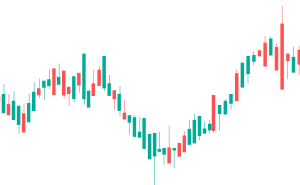The RMI indicator was introduced by Roger Altman. In February 1993, it was presented in the Technical Analysis of Stocks & Commodities magazine. The main aim of the indicator is to improve the data provided by the classical RSI indicator if the price reaches oversold/overbought areas.
RMI = 100 * N / (H + B), where
N – the number of days;
H – the sum of fluctuations of positive closing prices for the period between today and N days ago;
B – the sum of fluctuations of negative closing prices for the period between today and N days ago.
Being a classical oscillator of the technical analysis, the RMI indicator enables the user to detect the following possibilities to use in trading phenomena:
When the indicator reaches and crosses the 70% level in the downtrend, it is a significant signal that the price may continue a downward movement. In this context, the RMI indicator for MetaTrader points to the oversold area and after the area is reached, a decline may start.
When the indicator reaches and crosses the 30% level in the uptrend, it is a sure signal that the price has finished formation of the correction and now it is able to continue moving upwards. In this situation the assets should be bought.

MomPeriod = 11
SmoothPeriod = 6